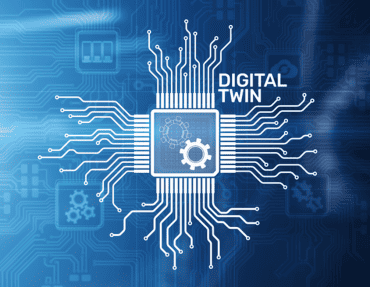
Manufacturers can use edge data for the full product lifecycle to gain accurate and timely insights into how their products are used by customers.
The edge is edging even deeper into manufacturing, promising to reshape not only production processes but extend out to supply chains as well. Thanks to the increasing power and prevalence of 5G, evolving communications networks, and robotics, the vision of an interconnected world promised by Industry 4.0 may finally be arriving.
![Featured Resource: Building a 5G Blueprint to Speed Deployment and Time to Revenue [View Now]](https://no-cache.hubspot.com/cta/default/8019034/9ac0cc35-9d92-4575-950f-7c8748ebbe38.png)
Within the next three years, 25% of supply chain decisions will be made across intelligent edge ecosystems through 2025, according to recent estimates by Gartner. “Increasingly, supply chains are becoming more dynamic and cover larger networks where data and decisions originate at the edge – from operators, machines, sensors or devices,” said Andrew Stevens, an analyst with Gartner. These edge ecosystems bring decision-making close to the original source of information. In doing so, data processing, communications, and storage at the point of data capture creates more even workflows, distributes data capacity, and streamlines real-time responses to decision-makers.
See also: 4 Ways Industrial AI Will Reshape Manufacturing in 2022
“The availability of technology linked to the Internet of Things, combined with advanced analytics, offers huge potential for innovation,” according to George Berekos, senior business development manager, IoT EMEA at SAS. “Manufacturers have grown accustomed to the idea of using IoT technology on the factory floor, with connected sensors enabling predictive maintenance and better planning. The industrial internet of things is very much with us.”
Analysts at Capgemini have also been exploring the potential of edge in manufacturing, as reflected in a study of 800 industrial companies and 170 telcos. “5G will resolve the connectivity problems that plague many industry verticals, including manufacturing, transportation, logistics, and energy and utilities,” they observe. “In fact, 75% of industrial organizations believe that 5G will be a catalyst for their digital transformation – and they are willing to invest heavily to get it.” They add that key use cases that draw on 5G range from real-time analytics based on edge computing to video surveillance of remote production lines.”
Logistics is another area where edge computing will expand. Gartner predicts that 75% of large enterprises over the next four years will have adopted some form of “intralogistics smart robots” — specialized forms of cyber-physical robotic automation primarily aimed at warehouse and distribution center environments. These smart robots “address the need to automate certain processes by adding intelligence, guidance, and sensory awareness, allowing them to operate independently from and around humans,” according to Gartner analysts. Examples of smart robots in action include transporting pallets of goods, delivering goods to a person, or picking individual items.
Edge in the manufacturing world means much more than simply streaming data from devices, Berekos adds. Manufacturers need to “draw on new data from the full product lifecycle, including end-user behavior, to gain accurate and timely insights into how their products are used by customers. This, in turn, means that they can repackage their products into services for their customers, adding value for customers and manufacturers alike.”
See also: Augmented Reality is Becoming the User Interface for IoT
As part of the 5G movement, Berekos adds, “many manufacturers are now investing in 5G-based mobile private networks as a way to create their own on-premises edge cloud. “Private 5G networks deliver speed, low latency, reliability, capacity, and security, he states. “5G-based clouds can play an impactful role in IoT and 5G-based industrial applications. They can be used to control robots inside a factory, or they can decide where data are stored, and strengthen cybersecurity when a machine is processing materials.”
Capgemini also documented rising interest in private 5G licenses among manufacturers. “This interest in private licenses is more prominent among large organizations – 47% of these bigger organizations are planning to have a dedicated or private network and would consider applying for a private license. “Interest is fueled by the belief that private networks will offer more autonomy and security and that telecom operators will be too slow,” the survey suggests.
At the same time, telecom operators have to be ready to meet these increased demands, the survey’s authors caution. “Telcos need to collaborate closely with industrial companies to create a win-win business model by understanding connectivity pain points in industrial operations and adjusting the priorities of 5G network’ and services’ rollout.”
The main challenge for manufacturers, the analysts find, “ranges from identifying the connectivity requirements for critical use cases to adjusting the connectivity roadmap as 5G evolves.”
![Featured Resource: Building a 5G Blueprint to Speed Deployment and Time to Revenue [View Now]](https://no-cache.hubspot.com/cta/default/8019034/9ac0cc35-9d92-4575-950f-7c8748ebbe38.png)







